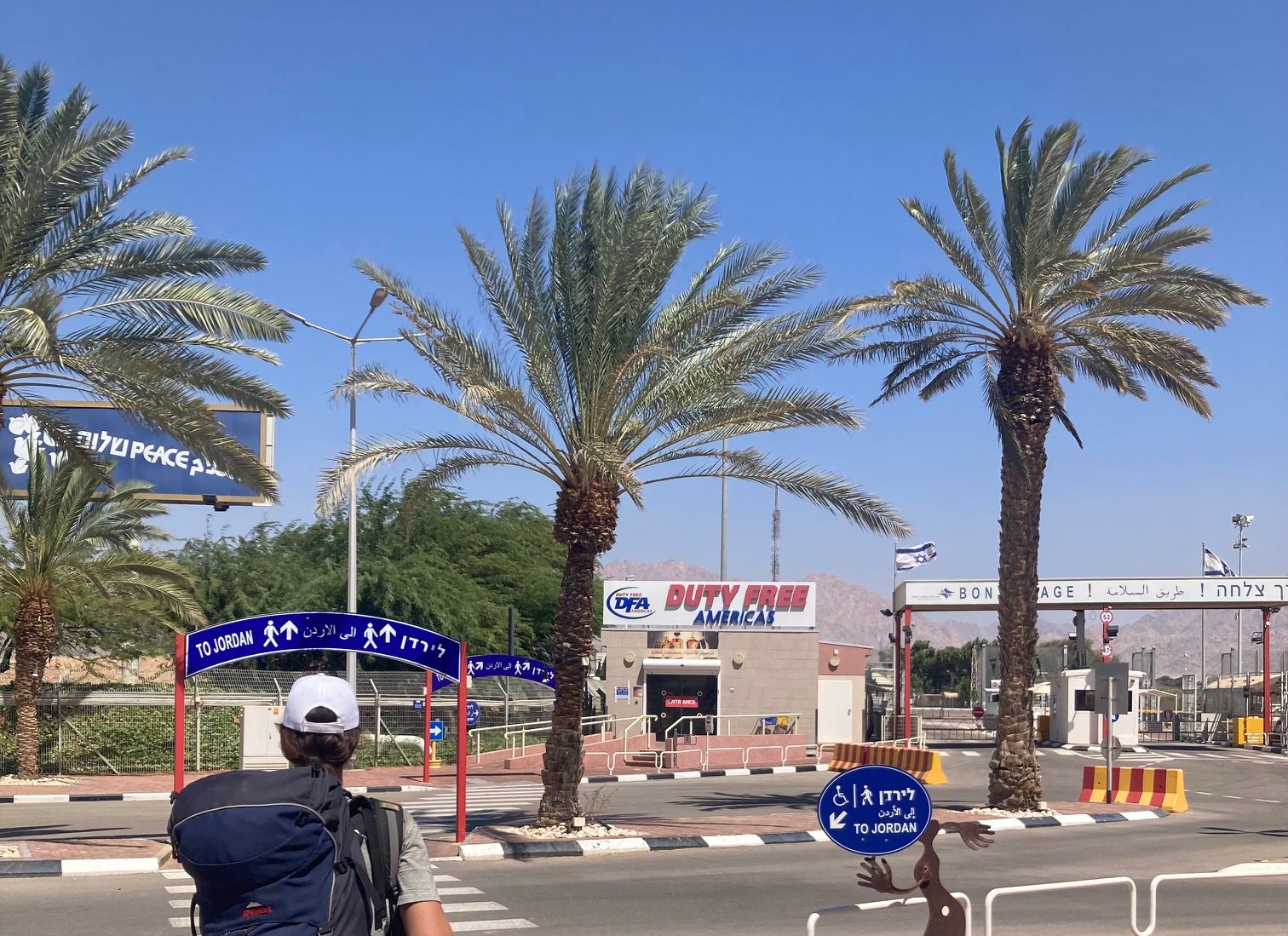There is not much information online about this particular route: going from Dahab (Egypt) to Aqaba (Jordan) by land. That’s why I want to describe how I did it in August 2023. Spoiler alert: it’s cheaper than the slow ferry from Nuweiba and much cheaper than the fast ferry from Taba and it really wasn’t that complicated at all. It also did not feel unsafe at any given moment.
First, I booked a Go Bus online going from Dahab to Taba Heights. The bus cost me 115 Egyptian pounds (~3,4€). It left Dahab pretty punctually at 8.40. We stopped once at Nuweiba and then went on to Taba Heights. Taba Heights is still a 25 minute drive away from the border with Israel. In the bus, the conductor asked around who wanted to go to the border and offered to arrange transport. He initially asked for 200 Egyptian pounds, which I haggled down to 100 (~3€). Speaking just very basic Arabic really helped there (learn how to say the numbers and ‘expensive’ and just approach it with humour). At Taba Heights, everybody who had not paid the conductor had to get off and then the bus just continued to the border. It seemed to be some kind of side hassle of the bus driver and conductor. We then got off the bus close to the border and walked to the Egyptian border control post. Everyone with a visa had to pay 15 Egyptian pounds (~0,4€). (If you’re coming from Israel you don’t need a visa to visit the Sinai peninsula.)
After the Egyptian exit stamp, I made my way to the Israeli border post. I was asked some basic questions about my destination and purpose of visit and they kept my passport for a couple of minutes for some security check, but overall it was very straightforward. They also did not stamp my passport, but gave me a little entry permit paper. I had wanted to change the rest of my Egyptian pounds into Israeli shekels at the border, but there was no possibility to exchange money whatsoever. There was an ATM once I had passed all the passport controls and had officially entered Israel, so I took out the minimum amount of shekels there (100 shekels). From the border, I then went to the green buses that were lined up along the sea side. By the way, this was one of the most scenic border crossings I had done so far – there were scuba divers descending into the clear blue sea right next to the border post. You can only take these buses with the Rav-Pass app or with the physical bus card. You cannot pay cash in the bus. I didn’t have either, so I asked around among the passengers if they would be willing to pay my fee on the app if I gave them the amount in cash. It didn’t take long and someone kindly accepted. There was some more asking around involved to get smaller cash to pay the 5 shekel bus fee (~1,2€) to the kind person helping me, but Israelis thankfully are really nice and it all worked out. If you download the Rav-Pass app beforehand, you can pay very easily by connecting to the wifi on the bus and scanning the code in the bus. From the border you can directly take bus number 30 which goes to the airport and stops exactly where you need to get off to get to the border with Jordan.
I first went into town to get rid off my Egyptian pounds as soon as possible. So I took the bus line 16 into town close to the central bus station where I changed my remaining Egyptian pounds into Israeli shekels. There are several bureaux de change near the central bus station in Eilat and one even bought my remaining Kenyan shillings that I had failed to exchange before at a good rate. I got a sandwich at a supermarket for lunch and then jumped on the bus number 30 at the central bus station. I again asked around among the passengers for someone to pay for me on the app and gave them the 5 shekels (~1,2€) in cash. I got off at the bus station close to the border with Jordan and walked for about 10 minutes to reach the Israeli departure side.
Now came the most expensive part of the trip: the Israeli exit fee of 112 shekels (~27,2€). You can pay it cash or by credit card. After receiving my exit permit on the Israeli side, I proceeded through two duty free shops to the Jordan border. I had bought the Jordan pass that includes the visa fee beforehand, and had also gotten the evisa online via the app (both very smoothly), so they only stamped my passport and I was through. (Note: If you only want to go to Aqaba you do not need a visa because this is a special economic region.) There was a bureau de change at the Jordanian side, so I changed some shekels into Jordanian dinar at a pretty okay rate, because there was no ATM here. The border crossing was pretty empty, but I could share the taxi to go to Aqaba with a fellow traveller. I would advise you to share it because it is quite expensive. The official rate was 11 Jordanian dinar to go into downtown Aqaba, so I paid 5,5 dinar (~7,2€). I had the cab driver take me to the bus station where I jumped on a minibus. I arrived in downtown Aqaba at 15.00 in the afternoon, just in time for one of the last minibuses heading north. The whole border crossing from Dahab to Aqaba had in total cost me about 43,6€. I later talked to a fellow traveller who had taken the slow ferry from Nuweiba and she told me that they had to wait for several hours on the boat before it left the shore and she paid about 60 USD, so the ferry doesn’t necessarily seem to be the fastest nor the cheapest option, but it’s probably more comfortable. I just don’t enjoy sitting around and waiting, so the land crossing was more fun to me.

